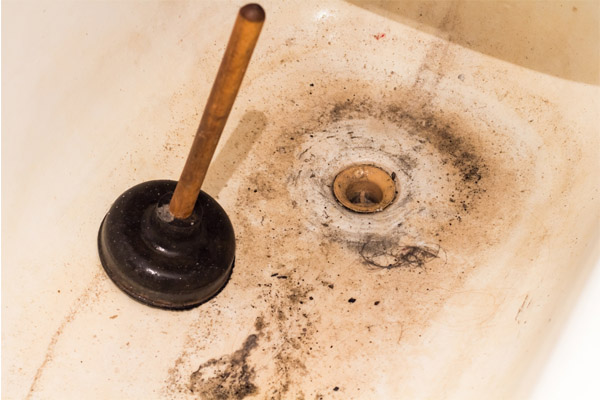Significant Factors Behind Waste in the Bathtub
Significant Factors Behind Waste in the Bathtub
Blog Article
What are your ideas with regards to What To Do If Sewage Starts Backing Up Into the Shower?

Sewer back-up in the bath tub can be an upsetting and unsanitary trouble for any type of home owner. Not only is it bothersome, but it also positions serious health threats and indicates underlying concerns with the plumbing system. Comprehending why sewer is turning up with the tub is crucial for taking appropriate activity to resolve the problem effectively.
Introduction to the Concern
Typical Factors for Sewage Back-up
Obstructions in the Drain Line
Among one of the most common root causes of sewage back-up is a clog in the drain line. This can occur as a result of the buildup of debris, grease, or international items in the pipelines, preventing appropriate flow and creating sewer to support right into your tub.
Tree Root Breach
Tree roots seeking wetness and nutrients can infiltrate sewage system lines through tiny cracks or joints. Over time, these origins can grow and expand, creating considerable damages to the pipes and resulting in sewage backup issues.
Understanding the Issue
When sewage starts backing up into the bathtub, it's a clear indication of an issue with the drain system. The wastewater that ought to be moving away from your home is instead finding its way back right into your living space, which can result in significant damage and carcinogen.
Possible Causes
Numerous aspects can contribute to sewer backup in the tub. From clogs in the sewage system line to problems with the plumbing facilities, recognizing the source is necessary for discovering a service.
Aging Infrastructure
Older homes may have obsoleted plumbing systems that are a lot more prone to corrosion, splits, and degeneration. As pipes age, they end up being a lot more vulnerable to leaks and clogs, raising the probability of sewer back-up incidents.
Heavy Rainfall or Flooding
During durations of heavy rainfall or flooding, the drain system might end up being overloaded with excess water, creating backups and overflows. This can cause sewer backing up right into tubs and other fixtures inside the home.
Indicators of Sewer Backup
Foul Odors
Unpleasant odors originating from drains or components, especially in the bathroom, might indicate sewage backup issues. These smells are commonly solid and consistent, signifying an issue that needs prompt interest.
Slow Draining Fixtures
Bath tubs, sinks, and commodes that drain pipes gradually or not whatsoever could be experiencing sewage backup. If several components are influenced simultaneously, it's likely that the issue stems from a common factor, such as the primary sewer line.
Gurgling Sounds
Unusual gurgling or bubbling sounds coming from drains when water is running elsewhere in your home are a sign of air caught in the plumbing system. This air build-up can result from sewage back-up and ought to be examined without delay.
Health And Wellness Risks Associated with Sewage Backup
Contamination of Water System
Sewer backup can contaminate the water system in your house, positioning a significant health risk to you and your family members. Direct exposure to contaminated water can lead to intestinal problems, skin infections, and various other diseases.
Mold and mildew Growth
Dampness from sewer backup can develop suitable conditions for mold and mildew growth in your house. Mold spores can exacerbate breathing issues and create allergies in sensitive people, making punctual clean-up essential.
Spread of Disease
Sewer consists of dangerous germs, viruses, and bloodsuckers that can create a variety of illness, consisting of liver disease, cholera, and gastroenteritis. Entering into contact with sewer or contaminated surface areas places you in jeopardy of infection.
Tidying up After Sewer Backup
Disinfection Procedures
Completely disinfect and sanitize impacted areas after sewage backup to eliminate unsafe bacteria and avoid mold growth. Use proper cleaning products and safety gear to ensure safe and effective clean-up.
Remediation of Impacted Locations
Repair any kind of damage to flooring, walls, or components caused by sewer back-up. Relying on the level of the damages, you might need to replace carpets, drywall, or various other materials to recover your home to its pre-loss problem.
Immediate Actions to Take
Shutting Off Water System
In case of sewage backup, it's necessary to switch off the water system to stop additional contamination and damage. Situate the major water shutoff valve in your house and shut it off up until the concern can be dealt with.
Contacting an Expert Plumber
Managing sewage backup is not a do it yourself job. Call a licensed plumber with experience in managing sewage-related issues to evaluate the scenario and perform essential repair work or clean-ups.
Staying Clear Of Contact with Contaminated Water
Until the sewer backup is resolved, avoid contact with polluted water to prevent the spread of microorganisms and pathogens. Use protective equipment if you must be in the affected area and clean your hands extensively afterward.
Safety nets
Routine Upkeep of Drain Lines
Set up normal inspections and upkeep of your sewer lines to identify and resolve possible concerns before they rise into major issues. This can consist of cleaning debris, checking for tree root intrusion, and repairing any kind of broken pipelines.
Mounting Bayou Shutoffs
Think about setting up bayou shutoffs in your plumbing system to stop sewer from flowing back into your home during periods of heavy rainfall or flooding. These shutoffs immediately close when water draws back up, protecting your building from contamination.
Proper Disposal of Home Waste
Stay clear of purging anything other than toilet tissue and human waste down the bathroom to avoid blockages and clogs in the drain line. Dispose of oil, oil, and various other home chemicals correctly to minimize the danger of plumbing problems.
Why Is Water Backing Up in My Bathtub When I Flush My Toilet?
What to do about a sewer line clog
First, don’t bother with plunging. No amount of plunging will dislodge the clog in a sewer line. The clog is too far away. Plungers are for clogs in the toilet itself, not the sewer line. Plus, the most likely causes of a sewer clog are:
Tree roots Flushed toys or feminine products Grease buildup Those items don’t move easily. And in the case of tree roots, the roots need to be cut out of the pipe and the pipe will need to be repaired.
You’ll need a closet auger. A closet auger is a type of plumber’s snake with a protective cover to keep from scratching the delicate porcelain toilet. If the clog is further down, you may need to remove the toilet or use one of your cleanouts to get to the clog.
We also recommend doing a video inspection of the drain to ensure that the cause of the clog has been completely removed. Otherwise, you could have the same problem again in a few days or weeks.
https://mspplumbingheatingair.com/blog/why-is-water-backing-up-in-my-bathtub-when-i-flush-my-toilet

Do you enjoy more info about Why is There Sewage Coming Up Through the Bathtub? Put feedback below. We will be glad to hear your views about this blog. We are looking forward that you visit us again before long. Sharing is caring. You never know, you might be helping someone out. Thanks a lot for your time. Don't forget to check up our site back soon.
Call Today
Report this page